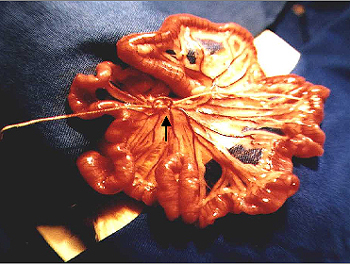Many methods are used to evaluate ischemia reperfusion injury, but the most employed one is the histological study. However, it only demonstrates on mucosal tunic, the index of lesion and morphologic preserved cells, but not the index of viable functional cells, present in the sample. With this purpose, a colorimetric method was used, employing Methyl Thiazolyl Blue (MTT). The experiment was conducted in 30 Wistar male rats, distributed in 3 groups: Group Control (GC), Group ischemia and reperfusion-1 (GIR-1) and Group ischemia and reperfusion-3 (GIR-3), with 10 animals each. The Groups GIR-1 and GIR-3 were submitted to intestinal ischemia for 30 minutes by a false ligature of superior mesenteric artery, and submitted to euthanasia after 1 and 3 days of reperfusion, when material was picked for absorbency and histological procedures. It was observed a smaller proportion of viable cells and a larger degree of mucosal lesion in GIR-3 group (p<0.05), while GC group was the one with the larger proportion of viable cells and smaller degree of the mucosal injury (p<0.05). This way we concluded that MTT is as effective and reliable as the histological study at evaluating alterations produced by intestinal ischemia-reperfusion.
Ischemia; Reperfusion; Tetrazolium salts; Intestine; Rats




